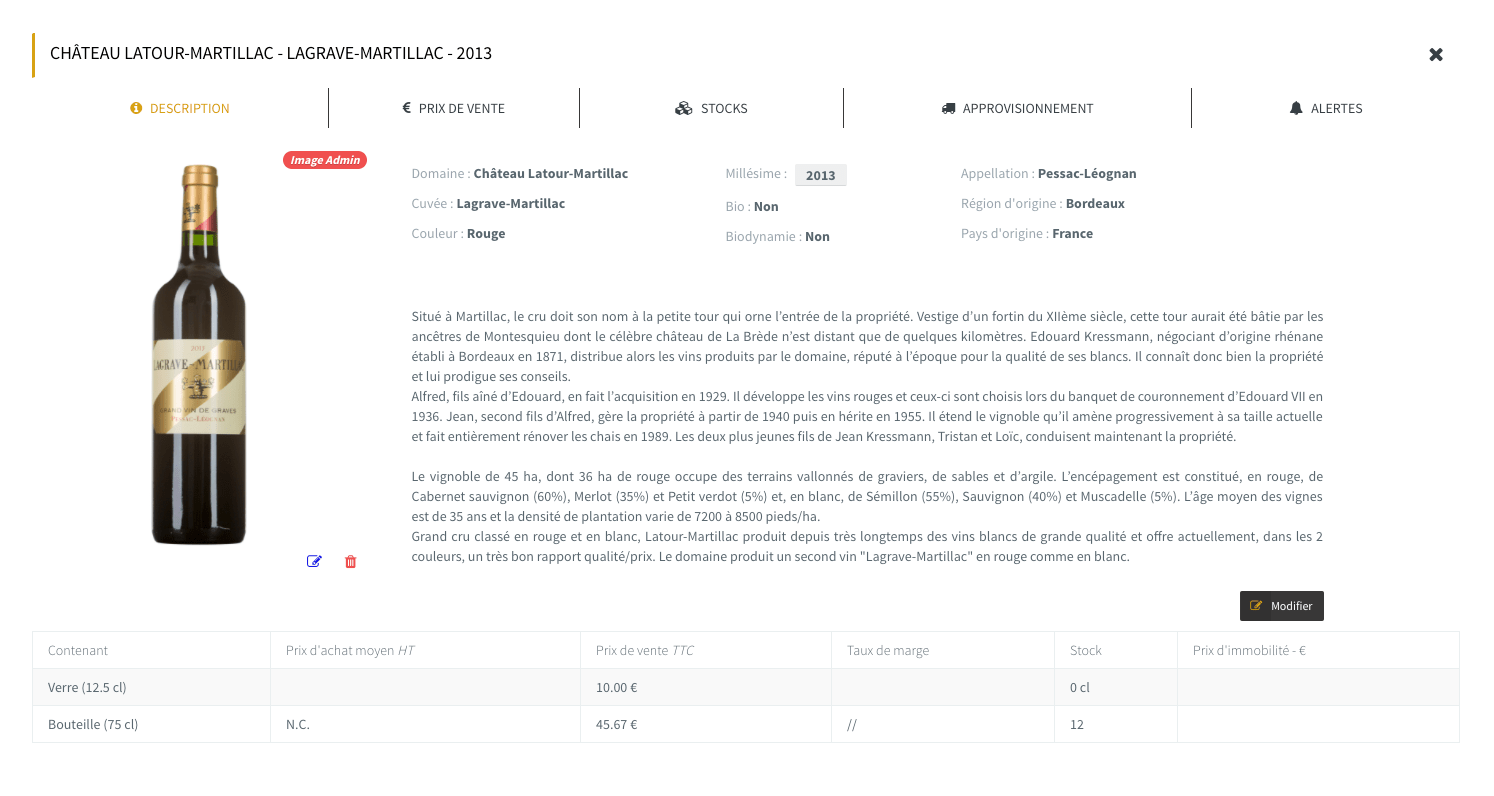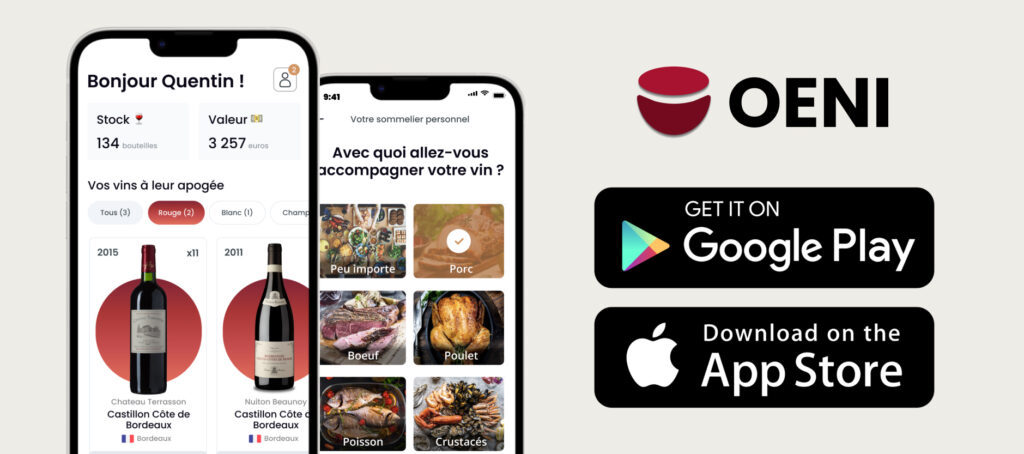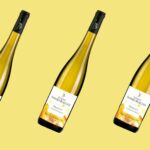When you buy a bottle of wine, the technical data sheet provides precise information on its composition and tasting potential. Yet many consumers don't always know how to interpret it. Understanding the details of the data sheet enables you to better appreciate the wine, make informed choices and anticipate its evolution.
Why consult a wine data sheet?
A wine data sheet is a detailed document written by the producer or distributor. It allows you to understand :
- The origin and characteristics of wine.
- The grape varieties used.
- Applied winemaking techniques.
- Advice on tasting and food and wine pairing.
It can be used by amateurs and professionals alike to help them select their bottles.
The essential elements of a wine data sheet

1. Wine identification
The first part of the sheet provides general information about the bottle:
- Wine name: It can mention the appellation, the estate or a specific cuvée.
- Region and appellation: Indicates origin and current regulations(AOC, IGP, VDP).
- Vintage: Information about the year of harvest, influencing quality and ageing potential.
These data enable immediate identification of the wine's identity.
2. Grape varieties used
The wine data sheet specifies the grape varieties making up the wine.
- A single-varietal wine (e.g. Chardonnay, Merlot) features a single dominant grape variety.
- A blended wine combines several grape varieties to balance structure, aroma and acidity.
The indication of grape varieties gives an idea of the wine's aromatic profile and structure.
3. Vinification details
Vinification covers all the stages involved in transforming grapes into wine. The technical data sheet often includes these details:
- Fermentation: In stainless steel tanks, concrete or oak barrels, influencing taste and texture.
- Ageing time: A barrel-aged wine develops woody aromas and a more complex structure.
- Maceration and extraction: For red wines, the length of maceration has an impact on the concentration of tannins and aromas.
This information provides clues to the wine's style and longevity.
4. Sensory analysis
A good wine data sheet describes the wine's taste profile in three aspects:
- Robe: Indicates color and brilliance, revealing the wine's age and intensity.
- Nose: Describes the aromas perceived (red fruit, citrus, spices, woody notes).
- Palate: Analyze texture, balance between acidity and sweetness, and length on the palate.
A sensory wine analysis guides the consumer to the expected taste experience.
5. Technical specifications
Some scientific data appear on the data sheet:
- Alcohol content: A wine at 12% will be lighter than one at 15%.
- Acidity (pH): Influences wine freshness.
- Residual sugar content: Indicates whether the wine is dry, semi-dry or sweet.
- Tannic index: Suitable for structured red wines.
These figures help us to better understand the wine's balance.
6. Serving and pairing tips
The wine data sheet also gives recommendations for enjoying the wine to the full:
- Serving temperature: Whites between 8 and 12°C, reds between 14 and 18°C.
- Decanting or aeration: Some young, tannic wines benefit from decanting.
- Food pairing: Suggestions for harmonious dishes.
These tips make tasting easier and bring out the wine's full flavour.
7. Ageing potential
Some wines are best drunk young, others evolve over time. The technical data sheet often mentions :
- Short aging (1-3 years) for light, fruity wines.
- Medium aging (5-10 years) for well-balanced reds.
- Long aging (+10 years) for powerful, complex wines.
Knowing how long to keep a wine helps optimize its ageing in the cellar.
How to use a technical data sheet to choose a wine?
When analyzing a wine data sheet, ask yourself the right questions:
- Do the grape variety and appellation match my tastes? If you like fruity wines, choose a Pinot Noir or a Gamay.
- Do the characteristics of the wine match the dish I'm planning? An acidic white wine like a Sauvignon Blanc will go better with seafood than a woody Chardonnay.
- Should the wine be drunk young or aged? A structured, tannic wine will gain in maturity after a few years in the cellar.
- Are the alcohol and acidity levels right for me? A light, fresh wine is better suited to a summer tasting than a powerful wine with 15% alcohol.
Understanding these factors will help you make the right choice and enjoy your wine to the full.
Mistakes to avoid when reading a data sheet
- Look only at the alcohol content: a wine at 14% is not necessarily more powerful than one at 12%, depending on the overall balance.
- Ignore vinification: A wine aged in barrels will have a different aromatic profile to one aged in stainless steel tanks.
- Forget food and wine pairings: Choosing a wine without thinking about the dishes that will accompany it can lead to an unbalanced pairing.
- Ignore ageing potential: Some young wines are too tannic to be enjoyed immediately.
How to read a wine data sheet to better appreciate its tasting
The wine data sheet is an invaluable tool for understanding a wine before you even open it. It provides information on vinification,wine analysis and food pairing. Knowing how to decipher it enables you to choose the right bottle for your preferences and tasting occasions.
The next time you buy wine, take the time to read its technical data sheet. It'll help you anticipate its taste and ageing potential, and help you make the right food pairings.
If you enjoyed this article, you may also be interested in "How to organize a wine tour in France"!





